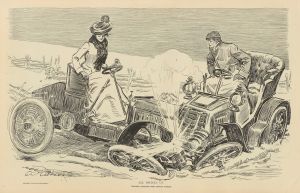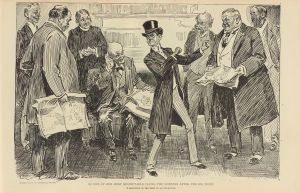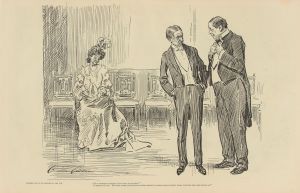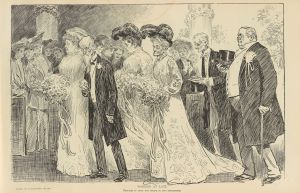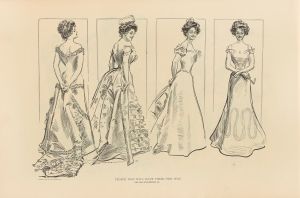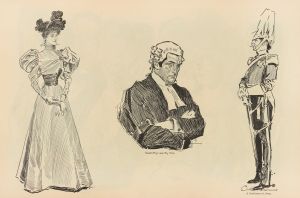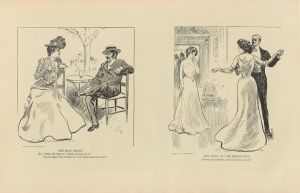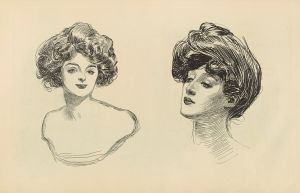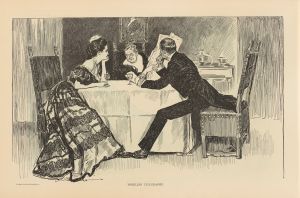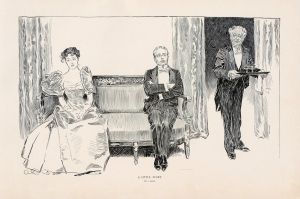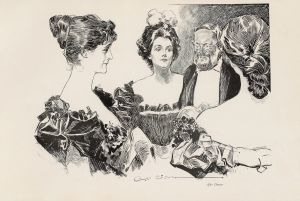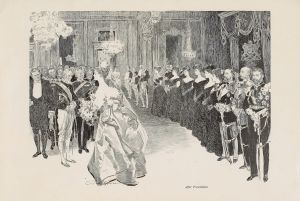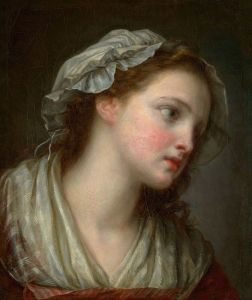
The brute ventures to suggest that a bonnet might possibly be more suitable
A hand-painted replica of Charles Dana Gibson’s masterpiece The brute ventures to suggest that a bonnet might possibly be more suitable, meticulously crafted by professional artists to capture the true essence of the original. Each piece is created with museum-quality canvas and rare mineral pigments, carefully painted by experienced artists with delicate brushstrokes and rich, layered colors to perfectly recreate the texture of the original artwork. Unlike machine-printed reproductions, this hand-painted version brings the painting to life, infused with the artist’s emotions and skill in every stroke. Whether for personal collection or home decoration, it instantly elevates the artistic atmosphere of any space.
Charles Dana Gibson was a prominent American illustrator best known for his creation of the "Gibson Girl," an iconic representation of the American woman at the turn of the 20th century. His work was widely published in magazines such as Life, Harper's Weekly, and Scribner's, and he became one of the most celebrated illustrators of his time. One of his notable works is "The brute ventures to suggest that a bonnet might possibly be more suitable," which exemplifies his style and thematic focus.
This illustration, like many of Gibson's works, captures the social dynamics and gender roles of the late 19th and early 20th centuries. Gibson's illustrations often depicted scenes of social interaction, courtship, and the evolving roles of women in society. The "Gibson Girl" was characterized by her beauty, independence, and confidence, reflecting the changing attitudes towards women during this period.
In "The brute ventures to suggest that a bonnet might possibly be more suitable," Gibson employs his characteristic pen-and-ink technique to create a scene that is both humorous and insightful. The title itself suggests a narrative of social interaction, possibly involving a man (the "brute") and a woman, where the man is offering an unsolicited opinion on the woman's attire. This reflects the social norms and expectations of the time, where men often felt entitled to comment on or dictate women's fashion choices.
Gibson's work is notable for its attention to detail and its ability to convey complex social commentary through simple yet expressive lines. His illustrations often featured elegant women in fashionable attire, set against the backdrop of upper-class society. The humor in his work often stemmed from the interactions between men and women, highlighting the absurdities and contradictions of societal expectations.
The significance of Gibson's work lies not only in its artistic merit but also in its cultural impact. The "Gibson Girl" became a cultural icon, influencing fashion, beauty standards, and the portrayal of women in media. Gibson's illustrations captured the spirit of an era, reflecting both the aspirations and the limitations faced by women at the time.
While specific details about the context or publication of "The brute ventures to suggest that a bonnet might possibly be more suitable" are not widely documented, it fits within the broader body of Gibson's work that explores themes of gender and society. His illustrations remain a valuable resource for understanding the cultural history of the United States during the late 19th and early 20th centuries.
Overall, Charles Dana Gibson's work, including this particular illustration, continues to be celebrated for its artistic excellence and its insightful commentary on the social dynamics of his time. His legacy as an illustrator endures, with the "Gibson Girl" remaining a symbol of the changing roles and perceptions of women in American society.





